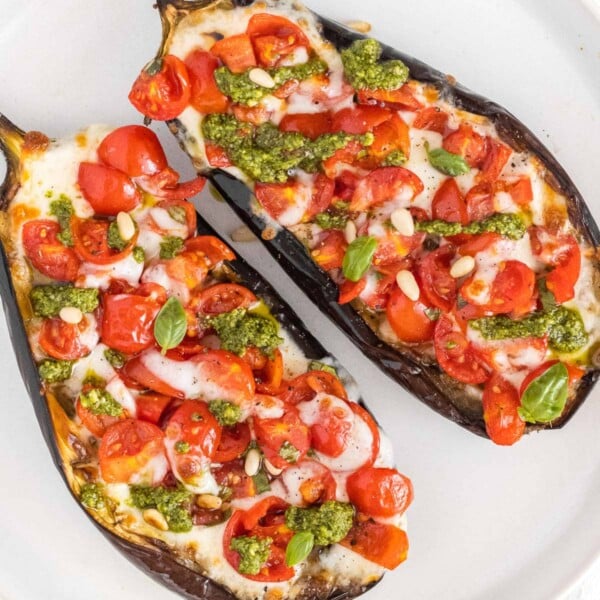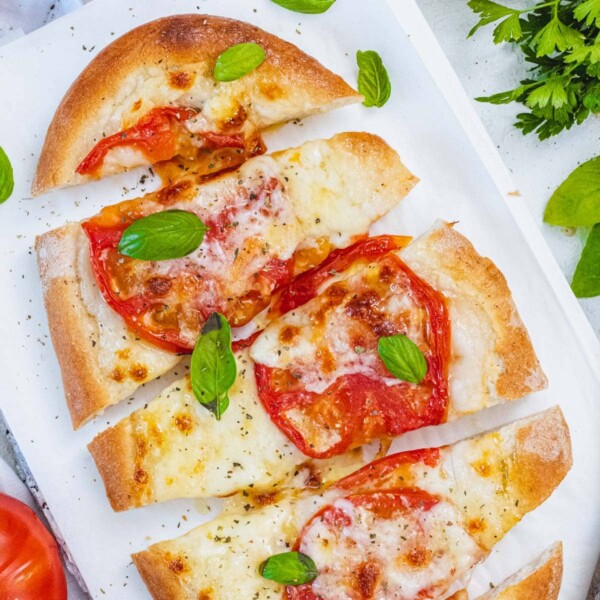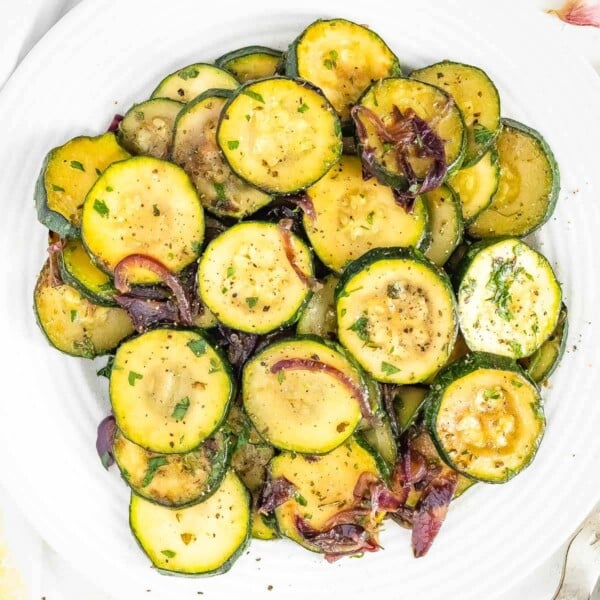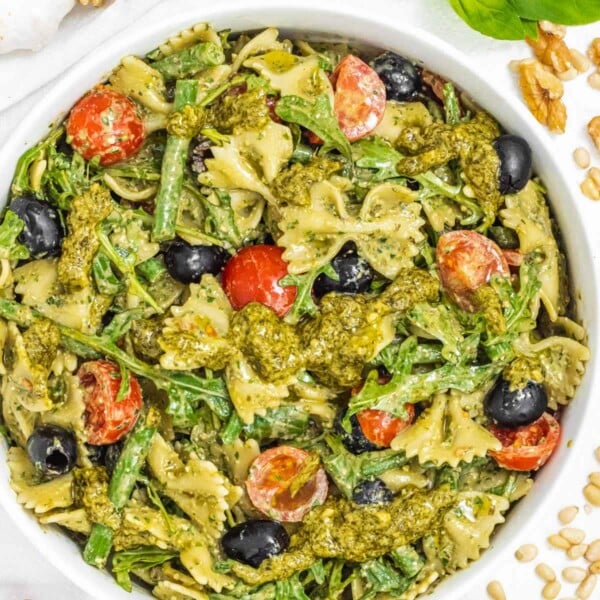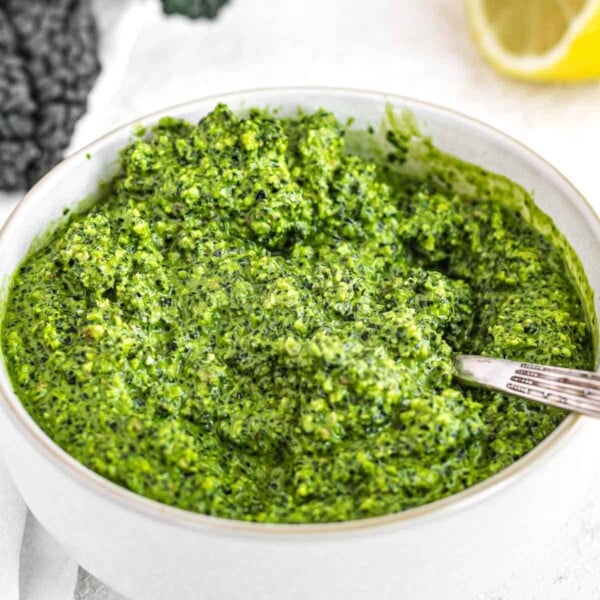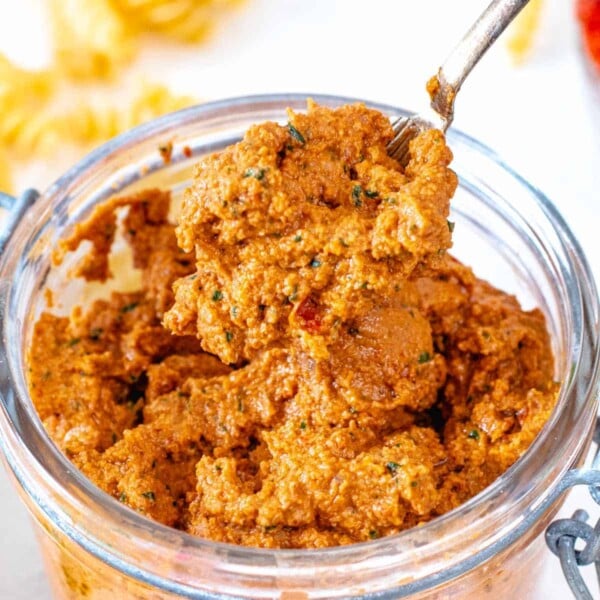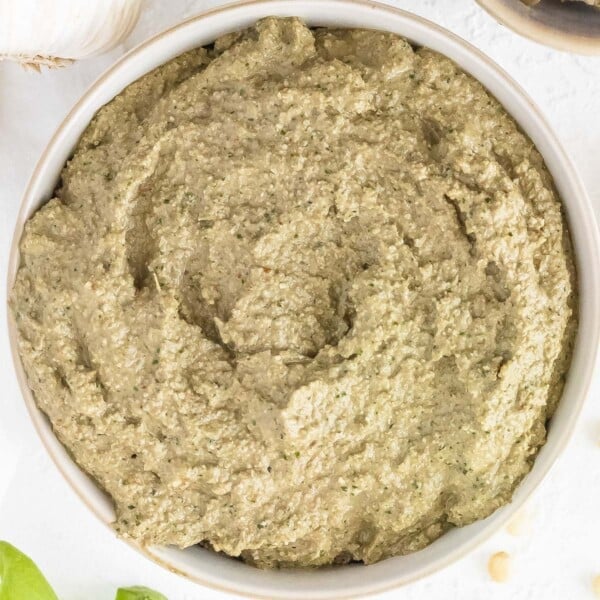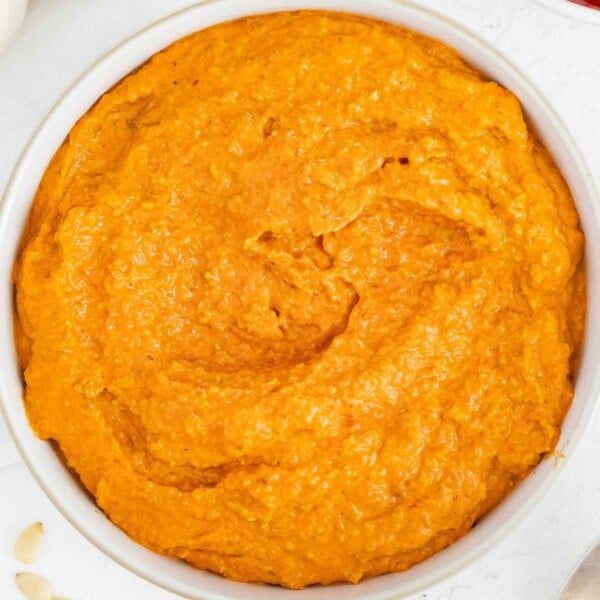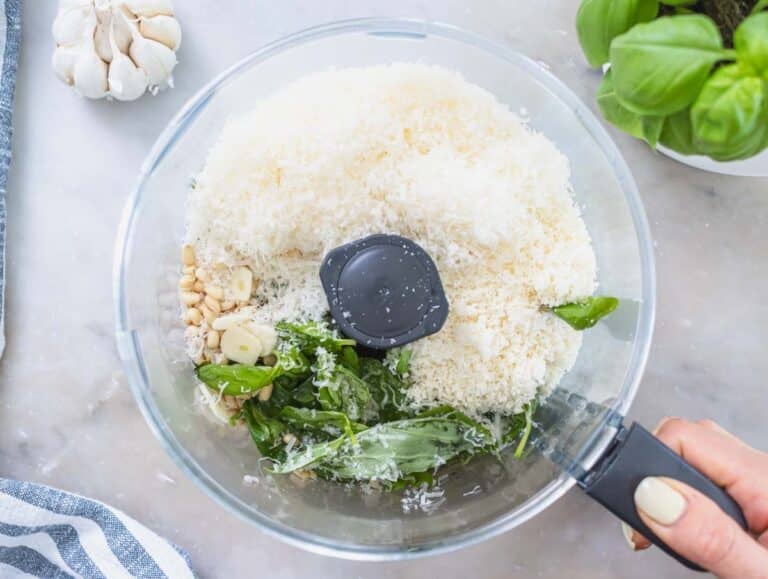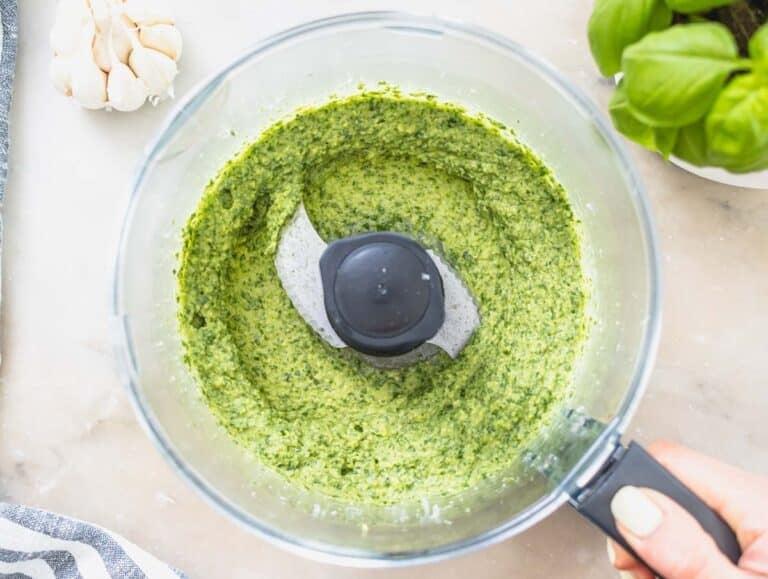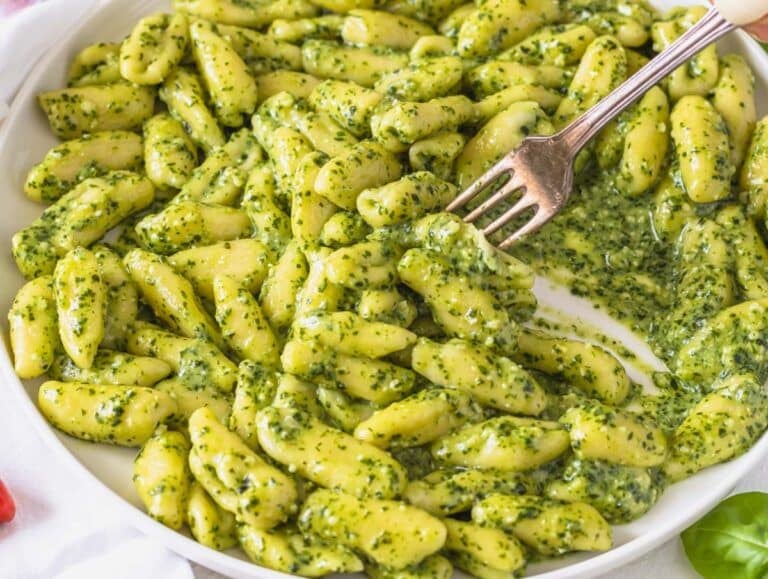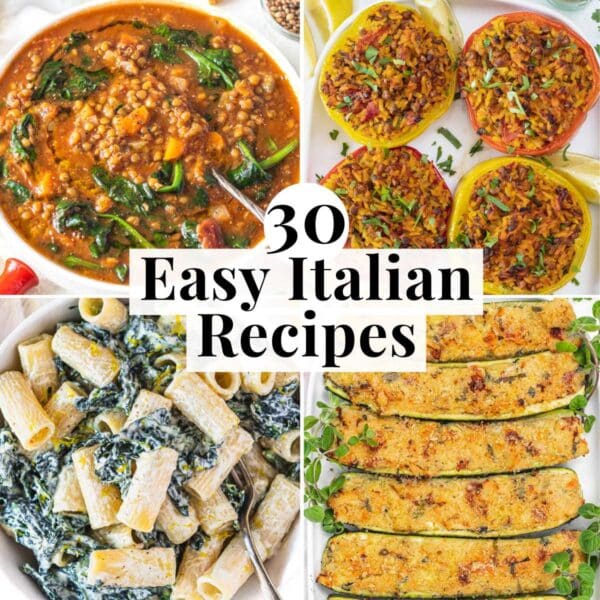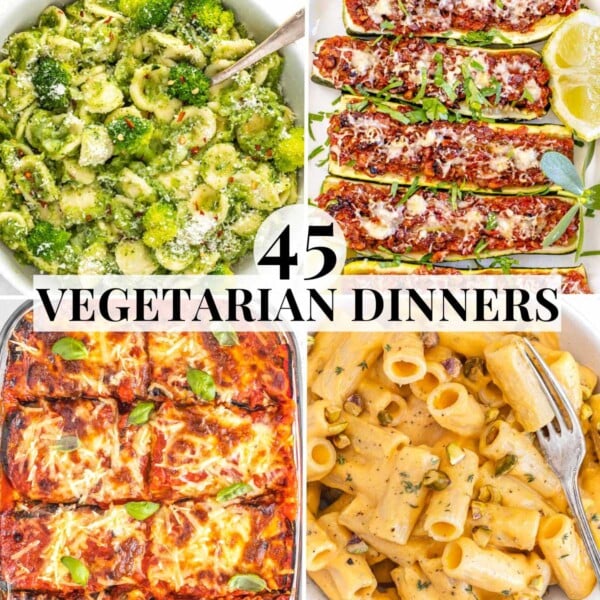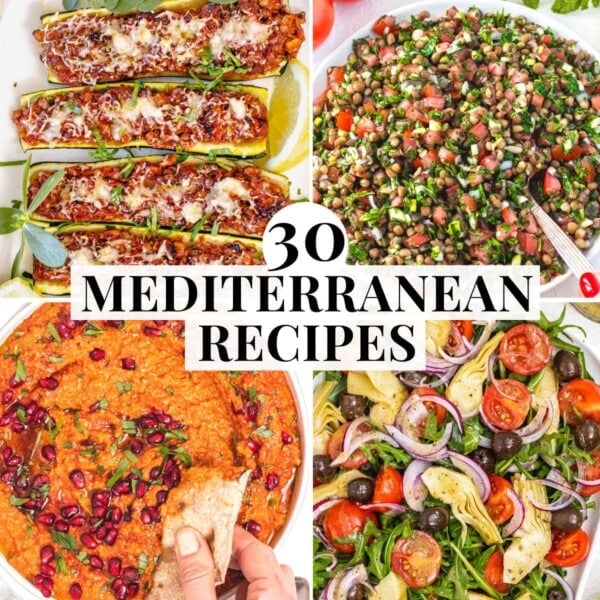Homemade basil pesto is a classic Italian recipe you can have as a sauce with pasta or as a spread in a sandwich, wrap, or pizza.
This recipe is based on the authentic Pesto alla Genovese recipe with fresh basil, pine nuts, parmesan cheese, and olive oil.
You can make it in 10 minutes in a food processor and keep it in the fridge or freezer for months, ready for your next meal.
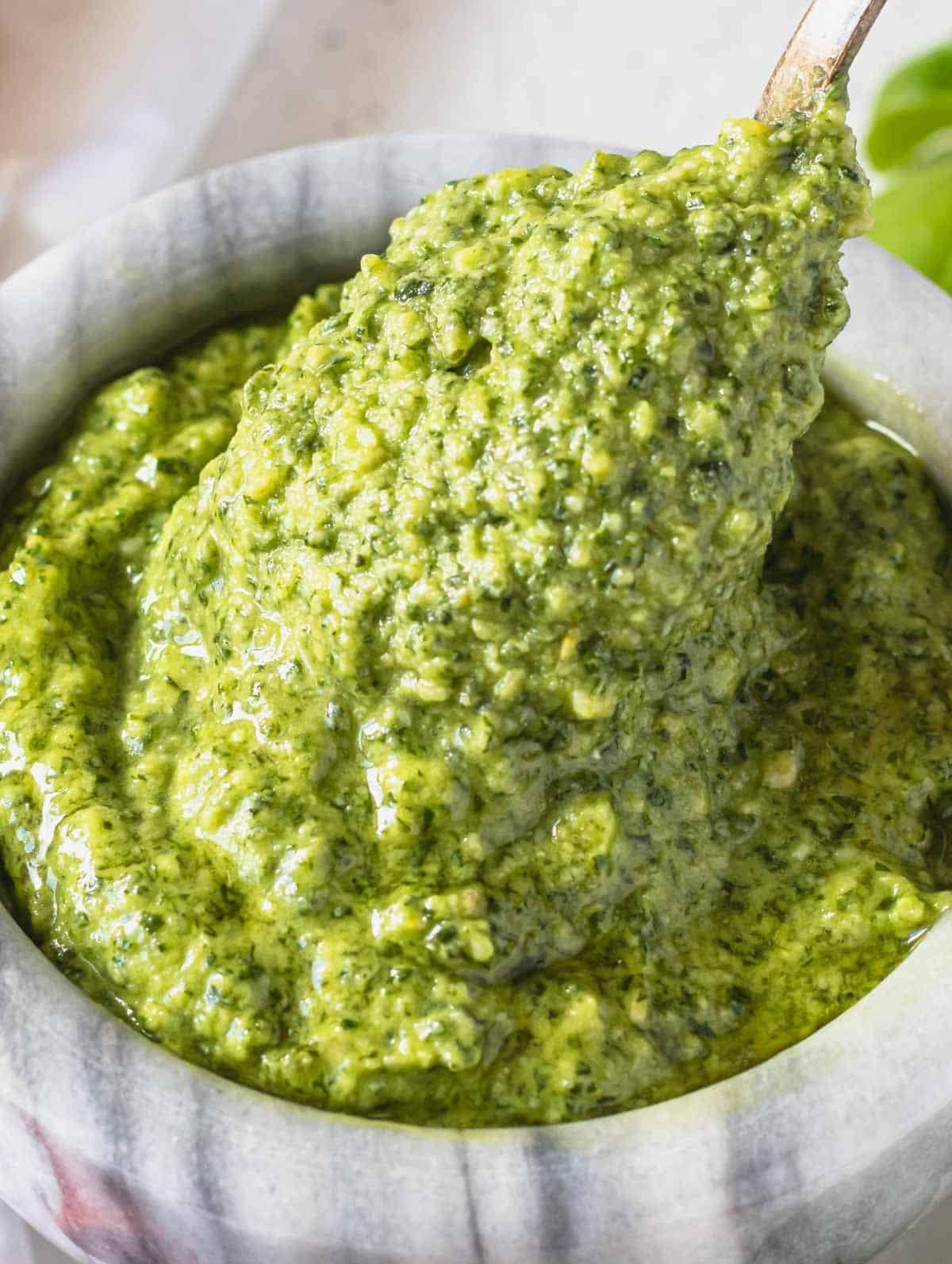
Table of Contents
Dietary Note: this basil pesto recipe is suitable for a gluten-free diet. Vegetarians and vegans might need to adapt the recipe using vegetarian or vegan cheese.
Don’t have time to read the full blog post? JUMP TO RECIPE HERE!
What is basil pesto?
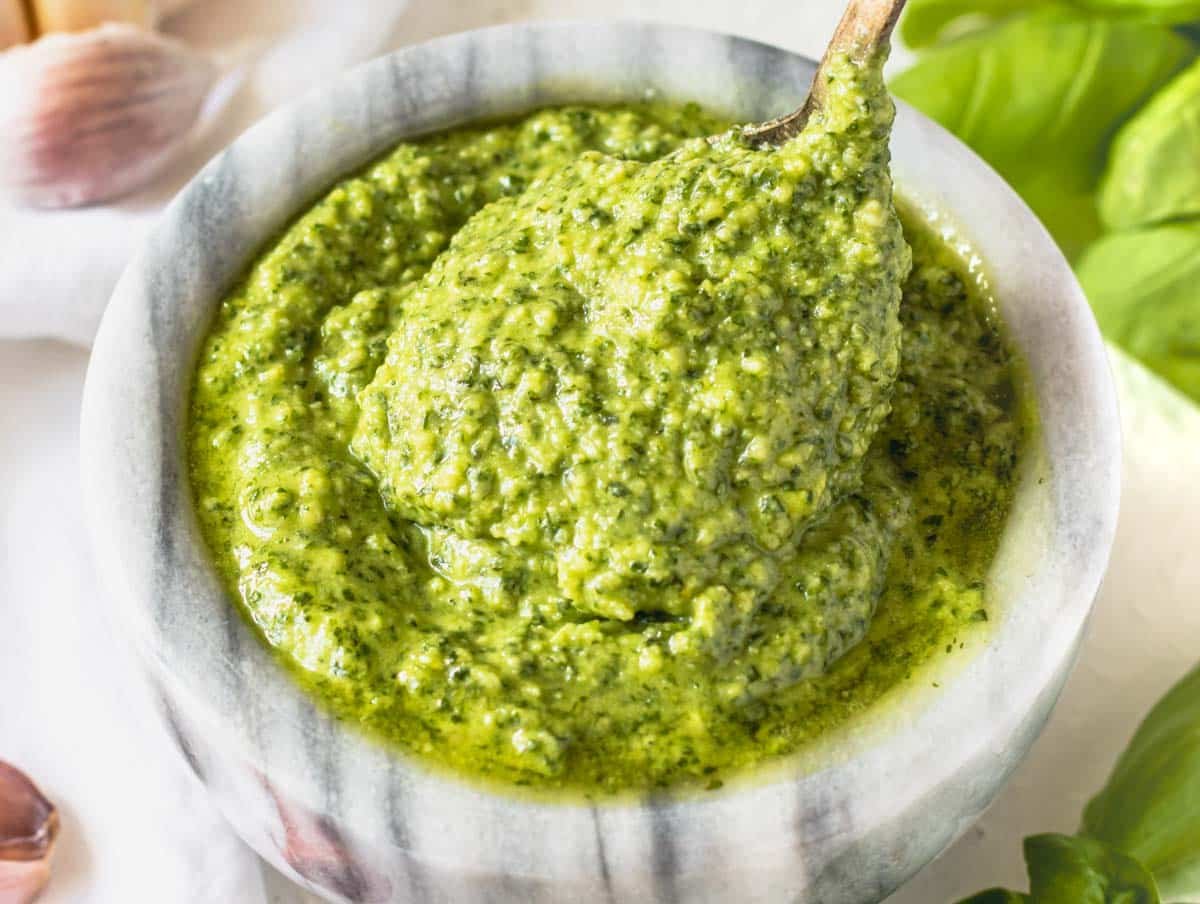
The name pesto comes from the Italian word “Pestare,” which means to pound.
That’s because pesto, in its traditional and authentic form, is made in a marble mortar, patiently pounding the ingredients with a wooden pestle until they turn into a beautifully creamy sauce.
Homemade basil pesto, sometimes called pesto alla Genovese, was first made in Genova, Liguria.
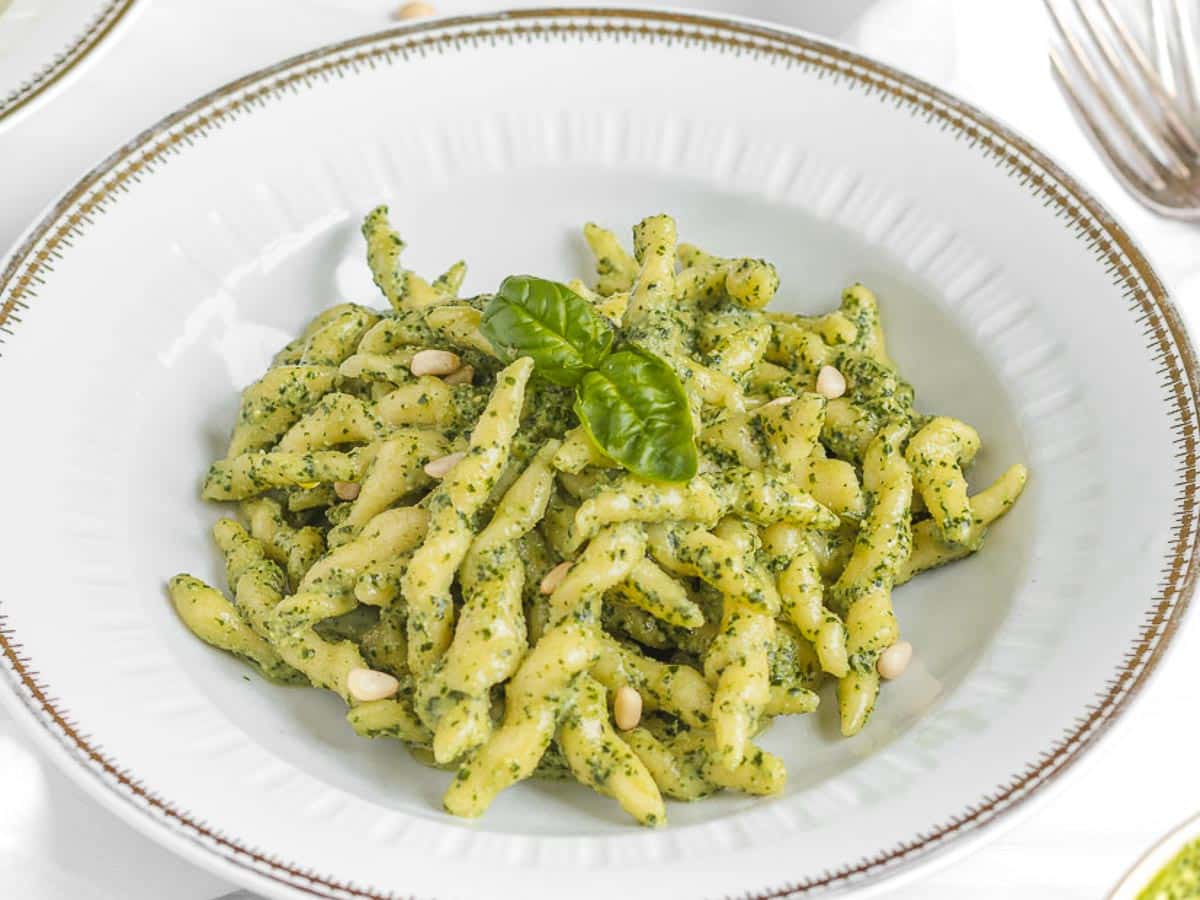
The most common way to serve it is with homemade trofie pasta, sometimes with added green beans and potatoes. But you can also use it in a delicious caprese sandwich.
Here, we reproduce the authentic Genovese recipe and make pesto with fresh basil leaves, pine nuts, garlic, extra virgin olive oil, parmesan, and pecorino.
Of course, you can make a pesto sauce with many other herbs and vegetables and make a delicious vegan pesto without cheese.
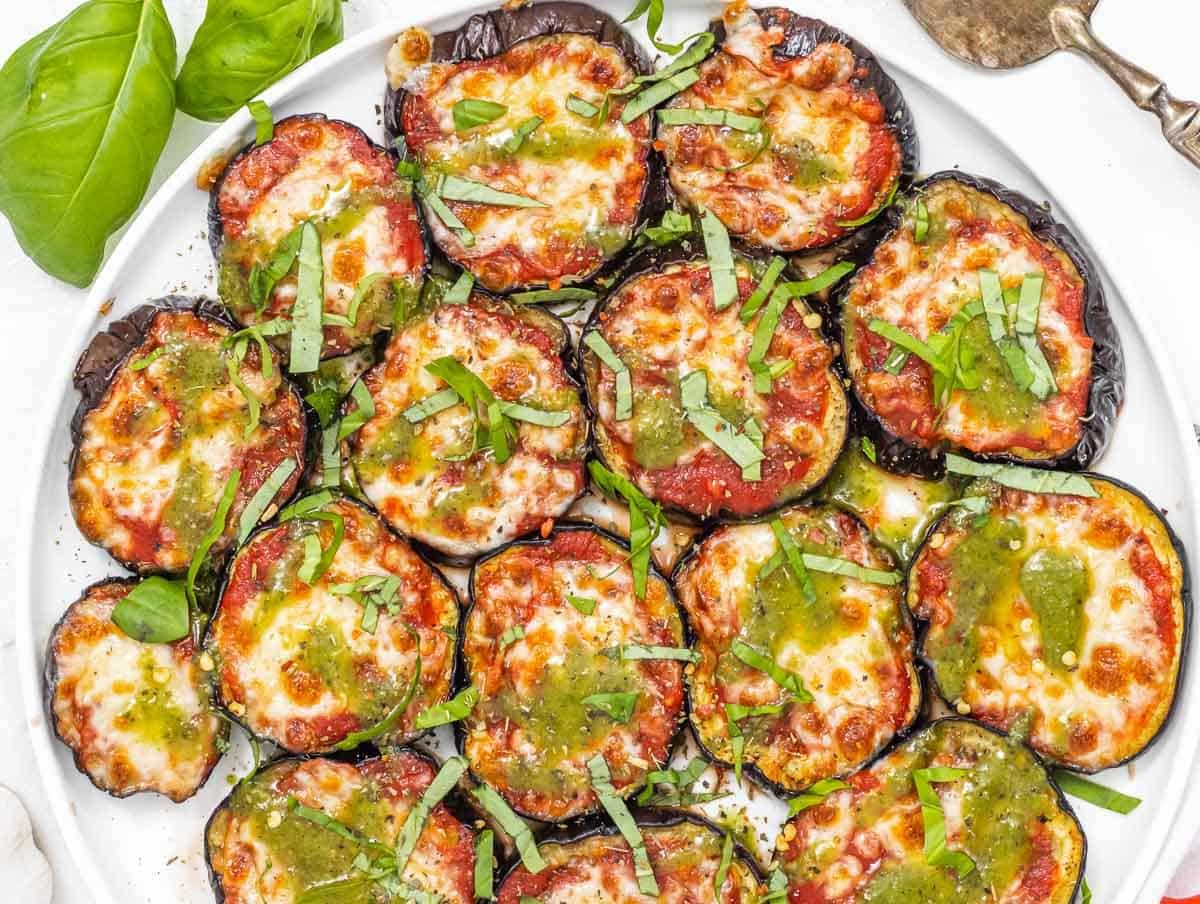
We tried arugula pesto, sun-dried tomato pesto, kale pesto, artichoke pesto, parsley pesto, zucchini pesto, and red pepper pesto sauce.
They are all easy-to-make, meal-prep-friendly recipes for pasta, pizza, bread, focaccia sandwiches, roasted and grilled vegetables, and salads.
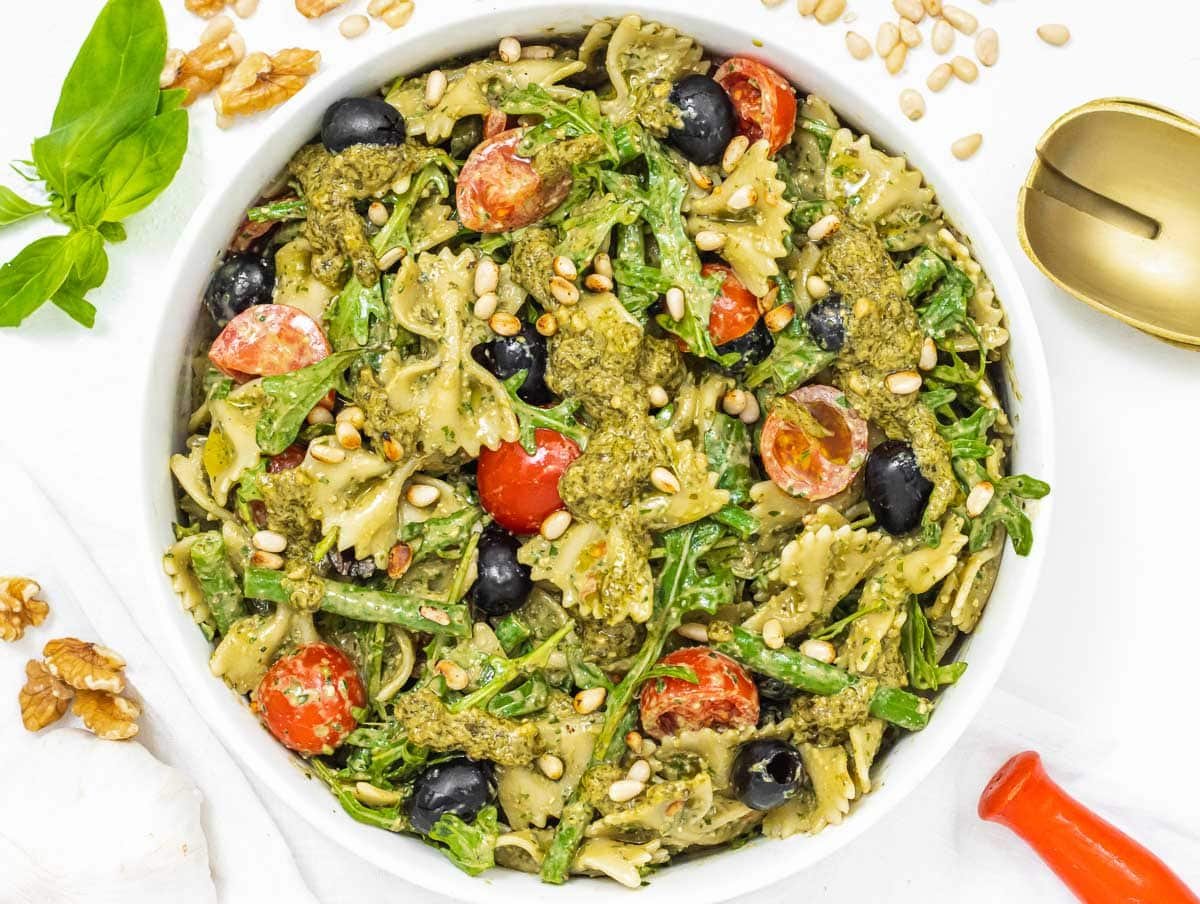
The classic basil pesto recipe uses cheese like parmigiano reggiano and pecorino to add flavor and texture. Substitutions are listed below.
If you are vegan, we have developed a delicious vegan pesto recipe for you.
Ingredients and substitutions for basil pesto
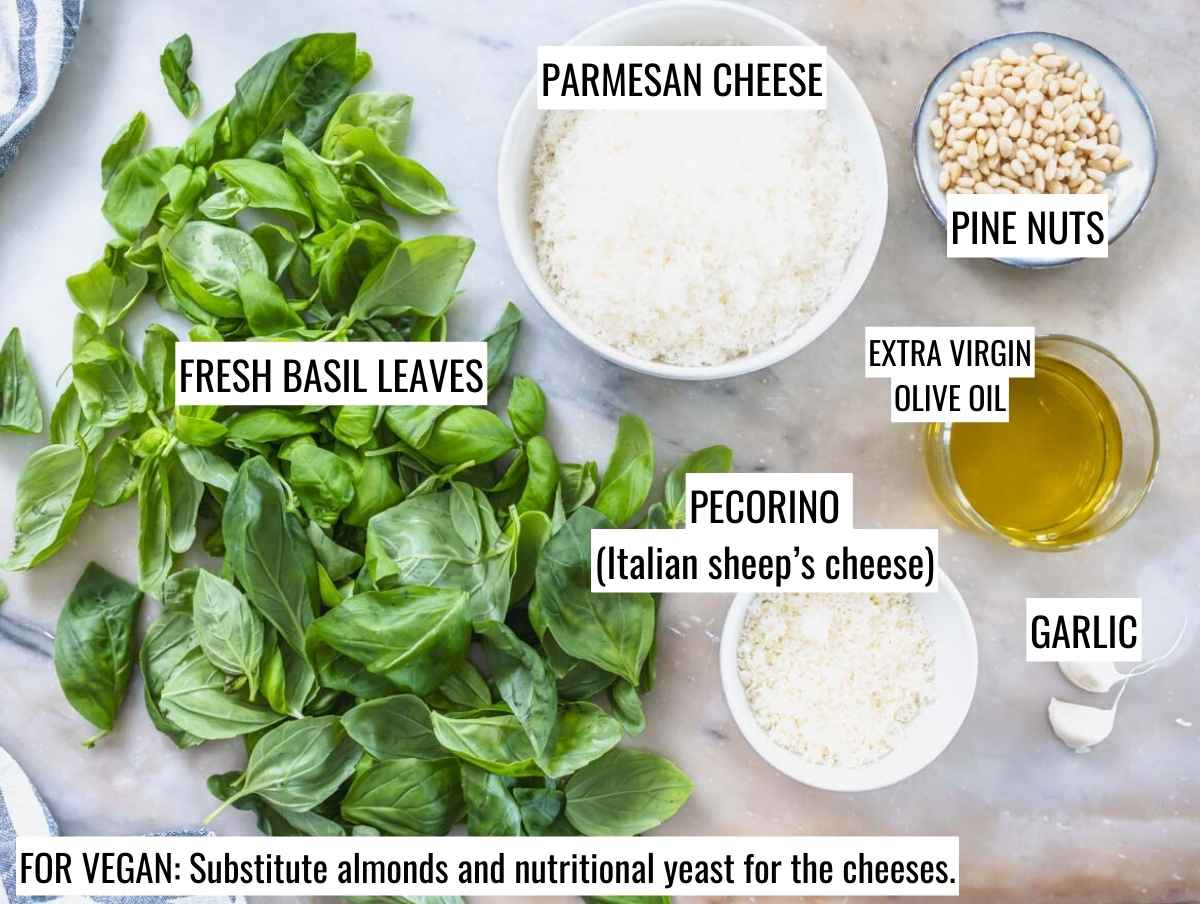
Quantities are in the recipe box at the bottom of the page.
Basil
Try to get the freshest Italian basil to make the best pesto sauce.
You can substitute other herbs to make a different type of pesto, but in this case, please refer to our other pesto recipes, as the ratios of ingredients might change.
Parmesan cheese
Ideally, parmigiano reggiano DOP or grana padano DOP should be used to make an authentic basil pesto recipe.
If you can’t access those, substitute them with regular parmesan cheese.
For vegans, please refer to our vegan basil pesto recipe, in which we use nuts and nutritional yeast to recreate the parmesan texture and flavor.
Pecorino cheese
Pecorino is a bold, savory Italian sheep’s cheese. In the traditional recipe for pesto, pecorino fiore sardo is recommended.
Substitute more common pecorino romano for pecorino fiore sardo.
If you don’t have pecorino, then add more parmesan cheese.
Pine nuts
Pine nuts are the only nuts used in basil pesto, and we recommend using them for this recipe.
The pine nuts should be raw, not toasted.
Substitute macadamia nuts, almonds, cashews, or walnuts for pinenuts.
Garlic
Fresh garlic cloves. Italians often make pesto without garlic as they are highly concerned about their breath at work.
So, if you prefer, you can make pesto without garlic.
Extra virgin olive oil
Extra virgin olive oil is an essential ingredient in basil pesto, and its quality will affect the flavor of your pesto sauce.
Salt
We recommend using sea salt. Start with a pinch, taste, and add more if necessary.
Note: Classic pesto does not contain lemon juice, black pepper, or red pepper flakes. However, you can definitely add lemon juice if you like more acidity in your homemade pesto sauce.
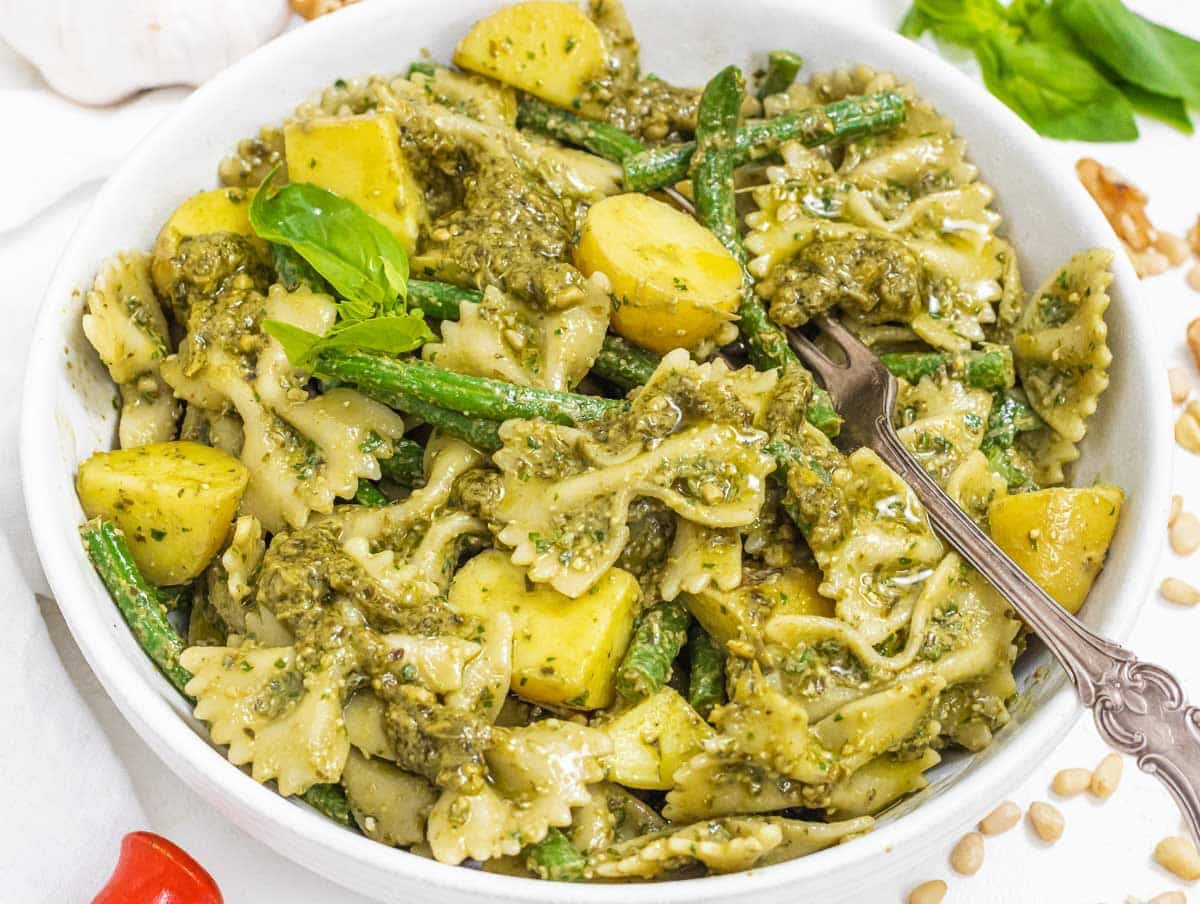
How to make basil pesto
US cups + grams measurements in the recipe box at the bottom of the page.
If your basil has not been washed, rinse it with cold water and gently pat it dry with a clean kitchen cloth.
Add grated parmesan cheese, grated pecorino cheese, chopped garlic, fresh basil leaves, raw pine nuts, sea salt, and extra virgin olive oil to a blender or food processor.
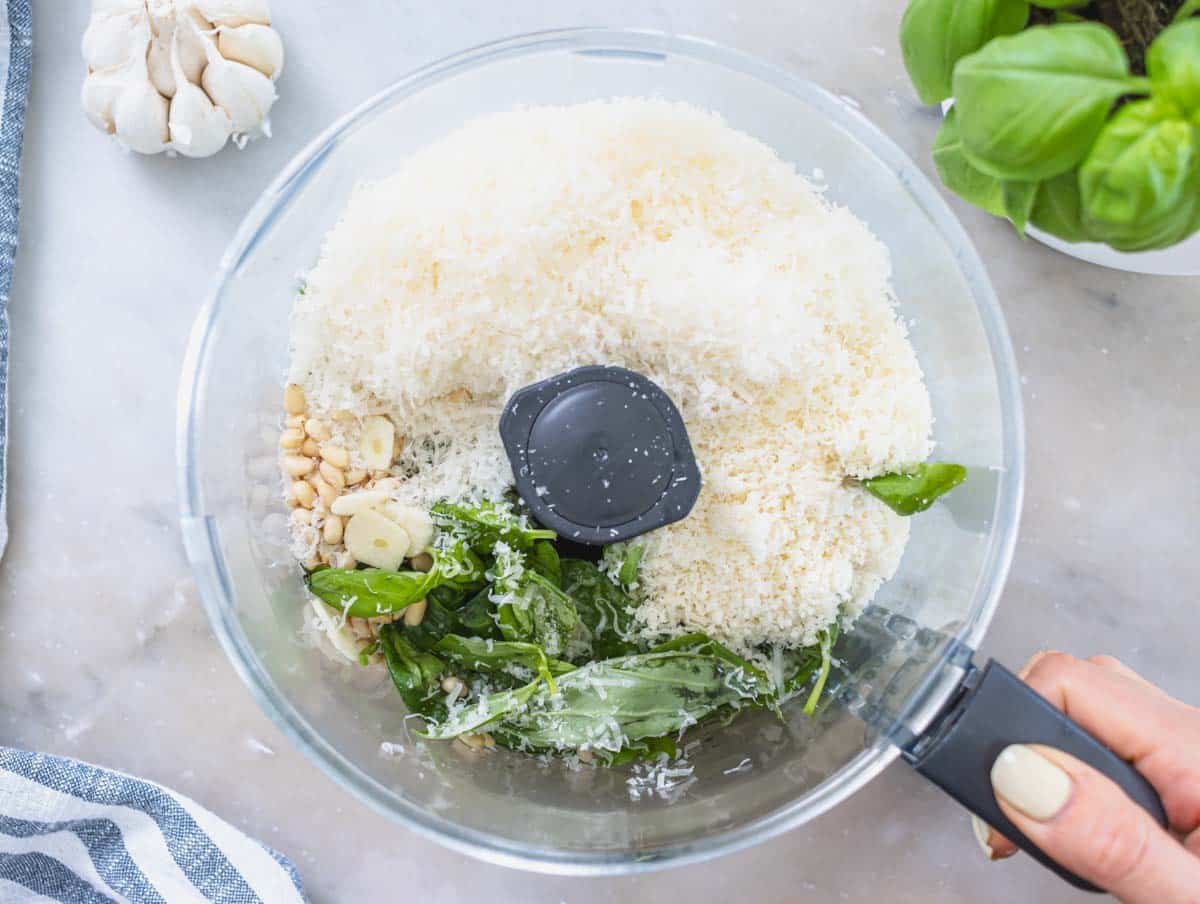
Pulse a few times until creamy but with a coarse texture. You might have to scrape down the sides of the food processor once or twice.
Tip: Avoid continuously blending, as this will heat the basil and olive oil and deteriorate the pesto’s color and flavor.
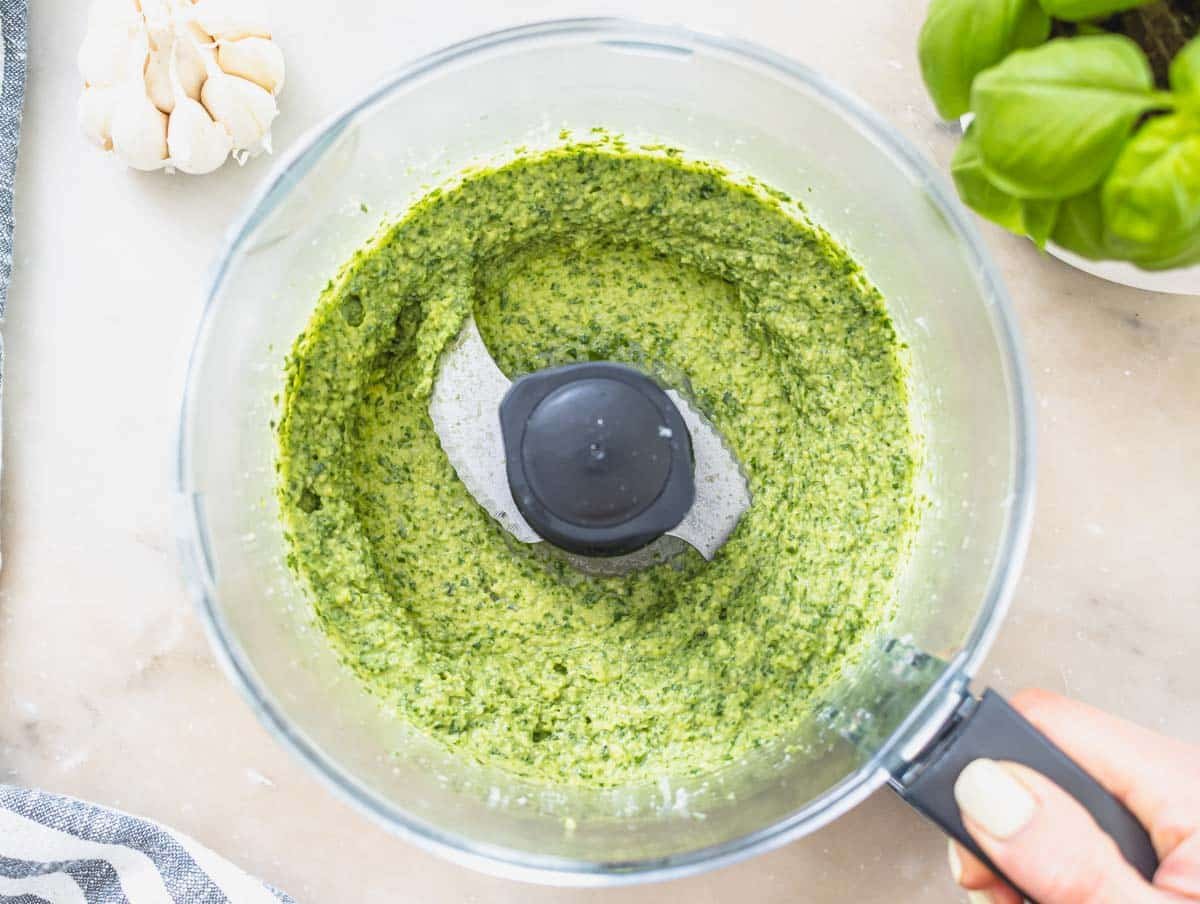
Taste and adjust for salt. Add more olive oil for a thinner pesto.

How to eat pesto with pasta?
The most common and traditional way of eating basil pesto is as a pasta sauce. Making pesto pasta is easy, but there are a couple of things to keep in mind:
Tip 1: Avoid direct heat
Pesto doesn’t like direct heat, so avoid heating it up on a pan. Direct heat damages the basil and negatively affects its color and aroma. It’s best to add the pesto to a mixing bowl and dilute it with hot pasta cooking water.
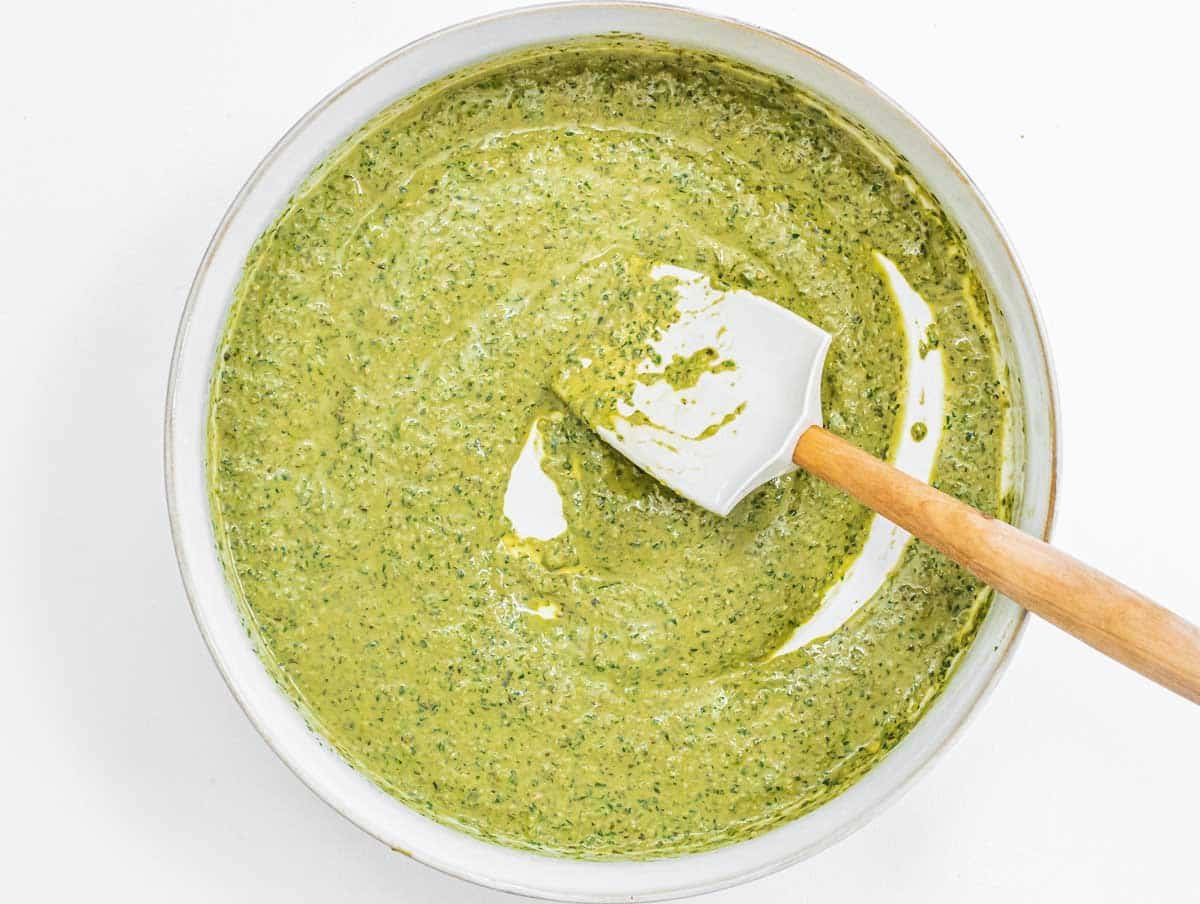
Tip 2: Cook the pasta al dente.
Al-dente means with a bite, not overcooked. Taste the pasta one minute before the time written on the package.
Then, instead of draining the pasta in a sift, fish it out of the pot with a slotted spoon or spider, add it to the bowl with the pesto, and toss.
This way, you’ll have reserved pasta water to add to the pasta if needed.
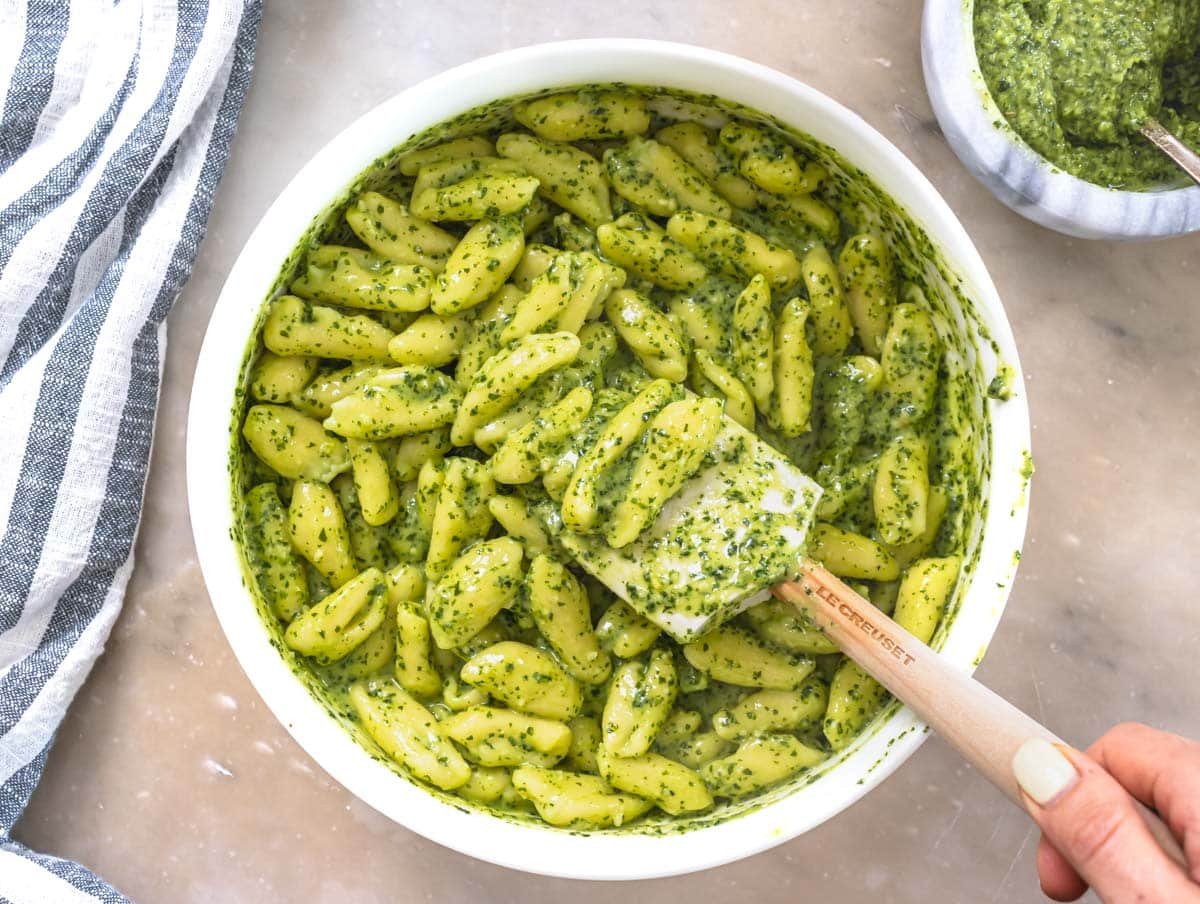
Tip 3: Cook the pasta in plenty of salted boiling water. Here’s a quick summary:
- 8 ounces of pasta (230 grams): cook pasta in 2 quarts of boiling water (8 cups or 2 Liters) with 1 tablespoon of salt (15 grams). Serves 2 – 3 people.
- 12 ounces of pasta (340 grams): cook pasta in 3 quarts of boiling water (12 cups or 3 Liters) with 1 ½ tablespoons of salt (21 grams). Serves 4 people.
- 1 pound of pasta (450 grams): cook pasta in 1 gallon of boiling water (16 cups or 4 Liters) with 2 tablespoons of salt (30 grams). Serves 5-6 people.
Serving suggestions
This basil pesto recipe is a versatile sauce. Most commonly, it is served with pasta. We recommend:
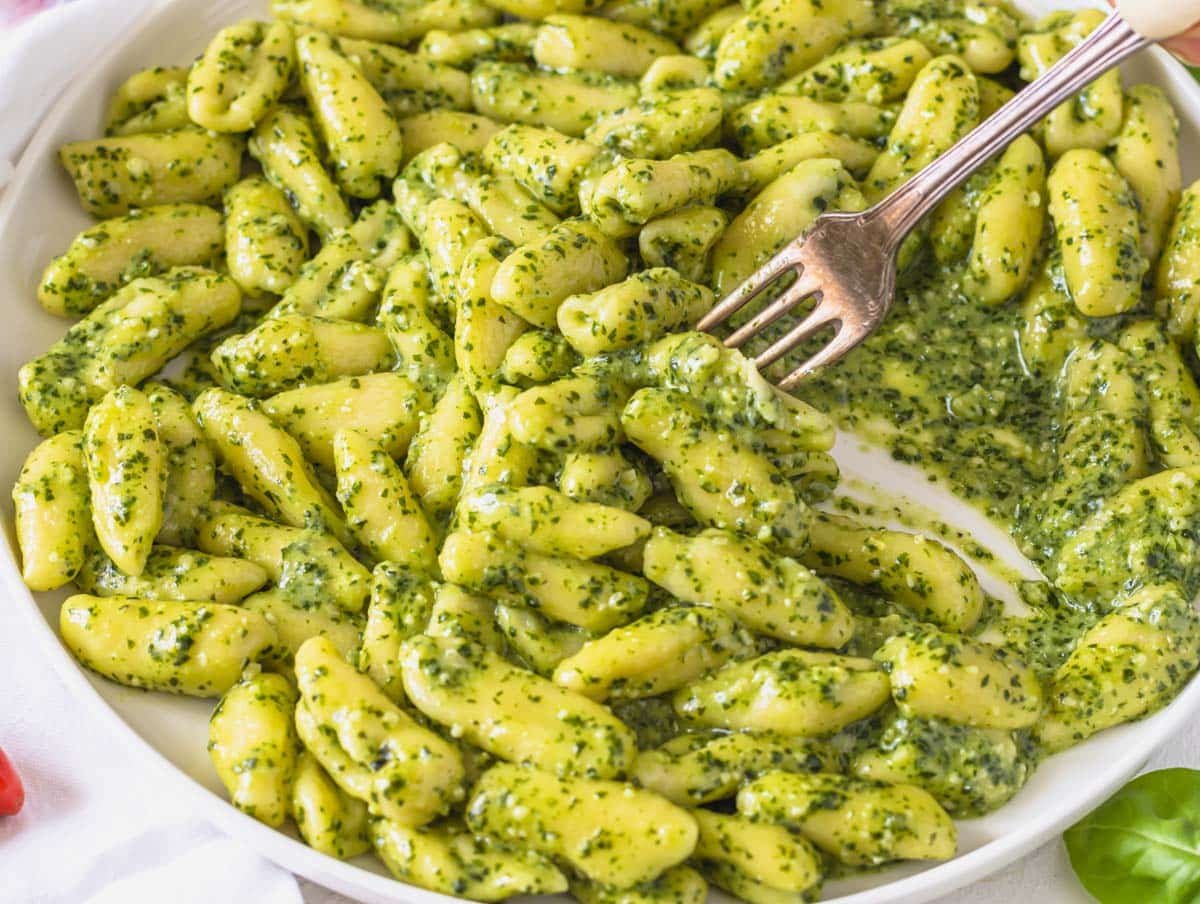
You can also use pesto for sandwiches, wraps, pasta salads and bowls, and with vegetables.
- Focaccia sandwich
- Caprese sandwich
- Pesto pasta salad
- Eggplant pizza
- Flatbread pizza
- Sautéed zucchini on toasted bread
- Stuffed eggplant
- Focaccia pizza
- With grilled eggplant and zucchini
Variations
Vegan pesto
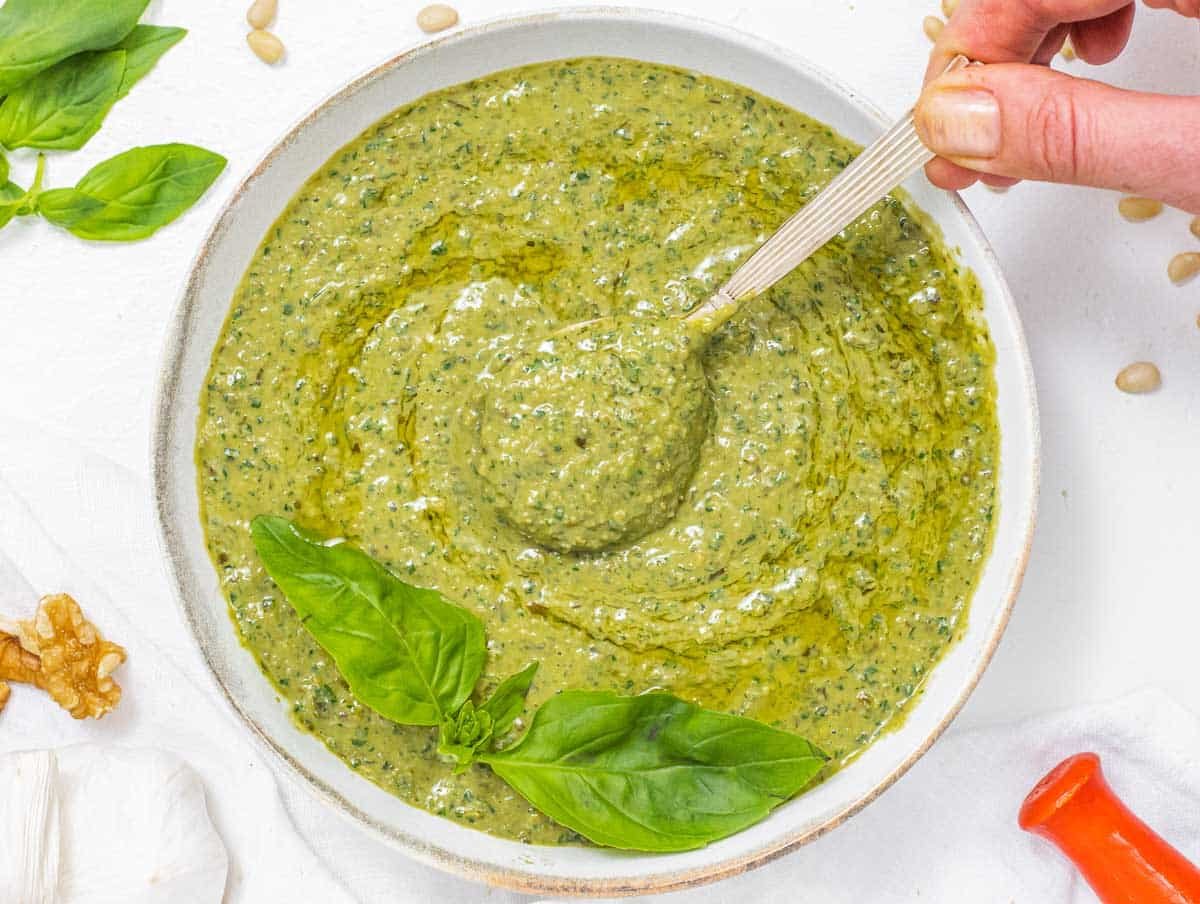
Vegan pesto is a delicious dairy-free alternative to traditional pesto. You’ll need to substitute nutritional yeast and almonds, macadamia, or walnuts for the cheeses to make it.
Here’s our vegan pesto recipe if you are interested.
Nut-Free Pesto

Nut-free pesto is very easy to make. Substitute sunflower seeds for pine nuts, and you’re good to go!
Storage & Make ahead
Make ahead: This basil pesto recipe is excellent for meal prep. It keeps well for days in the fridge and months in the freezer. We recommend freezing it right after it’s made.
Refrigerator: Transfer the pesto to a small airtight glass jar and cover it with a thin layer of extra virgin olive oil. Close the jar and keep in the fridge for 3 to 5 days.
Freezer: Freezing pesto is the best method for preserving its freshness. To do so, transfer the pesto to small airtight jars or clean ice-cube trays and freeze for three months.
Thaw: Defrost pesto at room temperature for 10 to 15 minutes. Avoid direct heat.
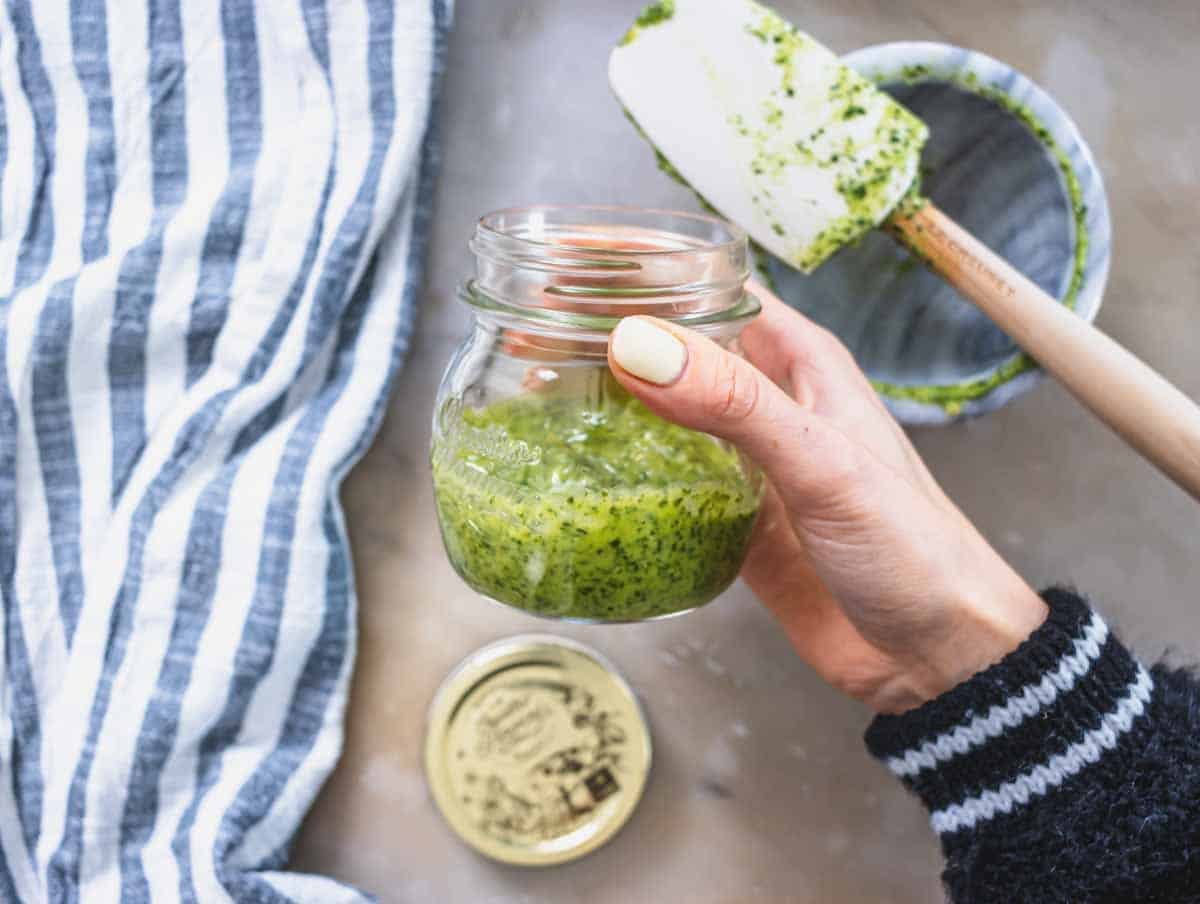
More Pesto recipes
- Arugula pesto
- Sun-dried tomato pesto
- Red pepper pesto
- Zucchini pesto
- Artichoke pesto
- Creamy chestnut pesto
- Kale pesto pasta
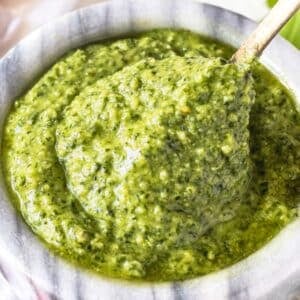
Basil Pesto
Equipment
- Food processor or blender
Ingredients
- ¼ cup extra virgin olive oil or more for a thinner pesto
- 2 packed cups fresh basil leaves
- ½ cup Parmigiano Reggiano grated
- ¼ cup Pecorino Romano grated / substitute more parmesan
- 3 tablespoons pine nuts
- ½ teaspoon sea salt or more to taste
- 1 small garlic clove
Instructions
- If your basil has not been washed, rinse it with cold water and gently pat it dry with a clean kitchen cloth.To a food processor, add: ¼ cup extra virgin olive oil, 2 packed cups fresh basil leaves, ½ cup Parmigiano Reggiano, ¼ cup Pecorino Romano, 3 tablespoons pine nuts, ½ teaspoon sea salt, and 1 small garlic clove (chopped).
- Pulse a few times until creamy but with a coarse texture. You might have to scrape down the sides of the food processor once or twice.
- Taste and adjust for salt. Add more olive oil for a thinner pesto.
MAKE IT A MEAL
- Toss with your favorite pasta, or have it as a spread in a sandwich, on pizza, roasted veggies, or stuffed veggies.For more ideas, check out our "Serving suggestions" chapter linked in the notes below.
Notes
Nutrition
If you liked this basil pesto, you might also enjoy:
